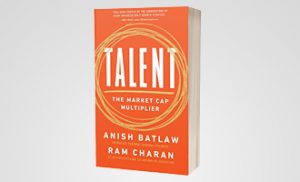Interview with Dhiraj Mukherjee
You are co-founder of Shazam, which is now one of the most popular apps in existence. Was it possible in the beginning to have a clear understanding of just how amazingly successful it was going to become and what were your main concerns when you first launched the service?
My co-founders and I set up Shazam in the year 2000, at the height of the dotcom bubble. Back then music fans bought CDs, mobile phones were far from smart, and Google was almost unheard of. When we first came up with the idea of identifying any song, anywhere from a mobile phone, we had big dreams and aspirations for the service. In reality we were naïve – our early results after we launched in 2002 were below expectations and we started to understand just how hard it is to build and popularise a business.
Yet we never gave up the vision, and worked and worked on improving the product. At launch we could identify a million songs in the UK, and we pushed hard to grow the service in other countries. The recognition rate improved, we added features like being to buy a ringtone or send a 30-second song clip to a friend. However, it took six full years for Apple’s app store to launch in 2008, and Shazam released one of the first iphone apps ever created. Finally Shazam found the right platform for the service, and usage exploded. Shazam has now been downloaded over 1 billion times worldwide, and 150 million people use Shazam every month.
How important do you believe creativity and innovation are for a digital business to be successful and are these skills more important than in a traditional business model?
I think that creativity is an essential part of building a successful digital business. Innovation for me is “turning ideas into invoices,” a phrase I once heard and like. Creativity is an essential ingredient of innovation, but in my mind it’s not an end goal in a digital business.
However, I think that there is no substitute for execution and delivery. I don’t know any start up (or any individual for that matter) which is successful without the ability and rigour to deliver. The art is being adaptable and nimble with what the business is delivering over time.
Established companies tend to be good at structured, repeatable processes, which works well in more traditional industries. In modern digital business, the ability to change course quickly, frequently and accurately is a key skill. Most large companies that I advise have not mastered this as a core competency. However, every successful start-up that I interact with displays the ability to confidently change direction when needed and when it matters. That’s why established companies have a lot to learn from digital start-ups and scale-ups, and I actively work on helping corporates and start-ups to collaborate in effective ways.
MORE NEWS
-

BUY WOMEN BUILT
Serial entrepreneur and fantastic business speaker Sahar Hashemi continues her phenomenal success both as a business creator, strategic thinker, creative leader and change-maker by launching BUY WOMEN BUILT. Any initiative… Read more -

Brian McBride Appointed President of the CBI
Brian McBride’s compelling career journey and business leader credentials have no doubt led him to being appointed as next President of the CBI. His wealth of entrepreneurial experiences and global… Read more -

UNDERSTANDING THE TRUE IMPACT OF BUSINESS TALENT
When globally-renowned business advisor Dr Ram Charan announced his upcoming book was called Talent: The Market Cap Multiplier, we couldn’t wait to get our hands on a copy. We all… Read more -

FASHION DECLARES A CLIMATE EMERGENCY
Sustainable business expert Safia Minney is the driving force behind “Fashion Declares a Climate, Ecological & Social Emergency”, a brand new initiative aiming to make ground breaking change across the… Read more
